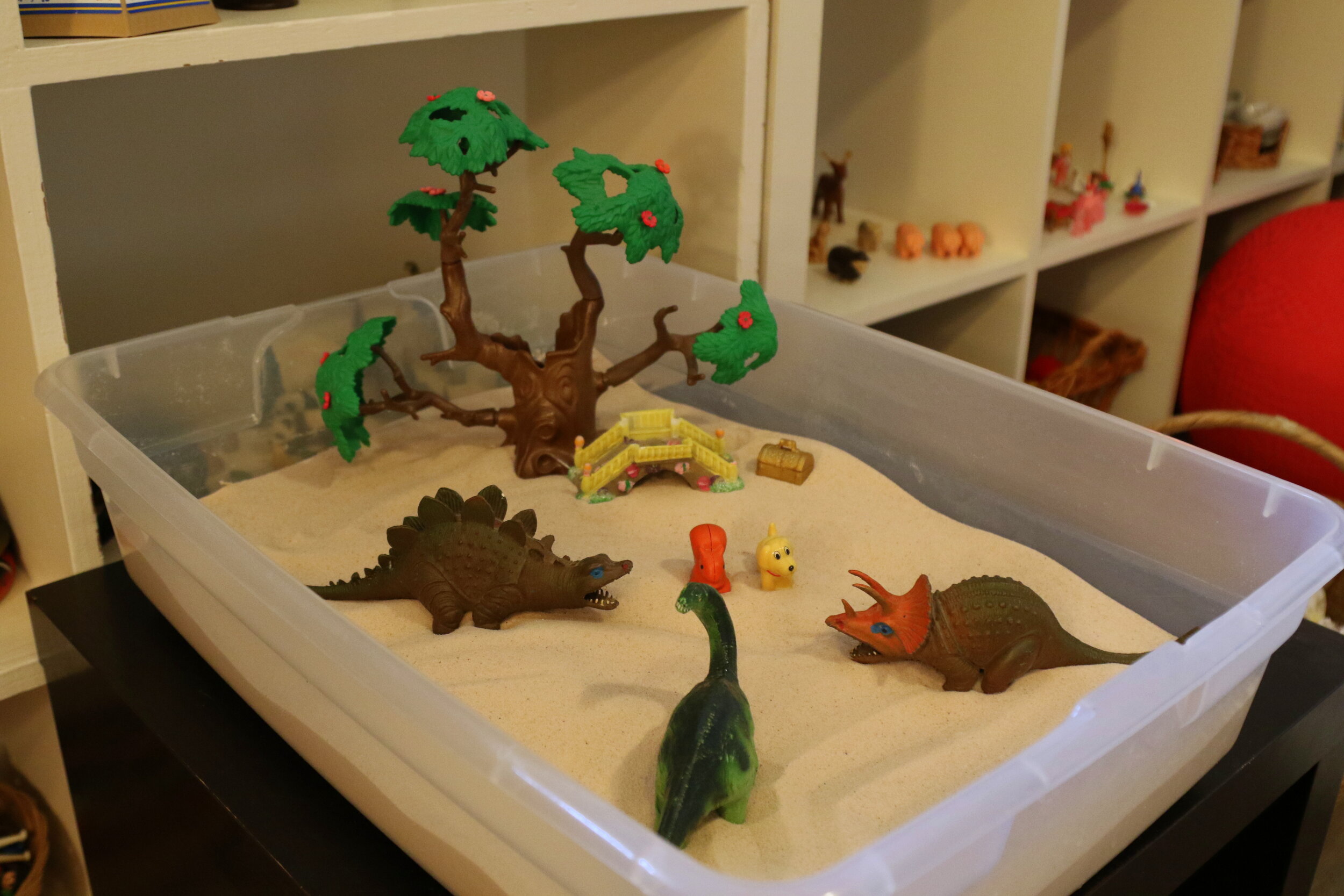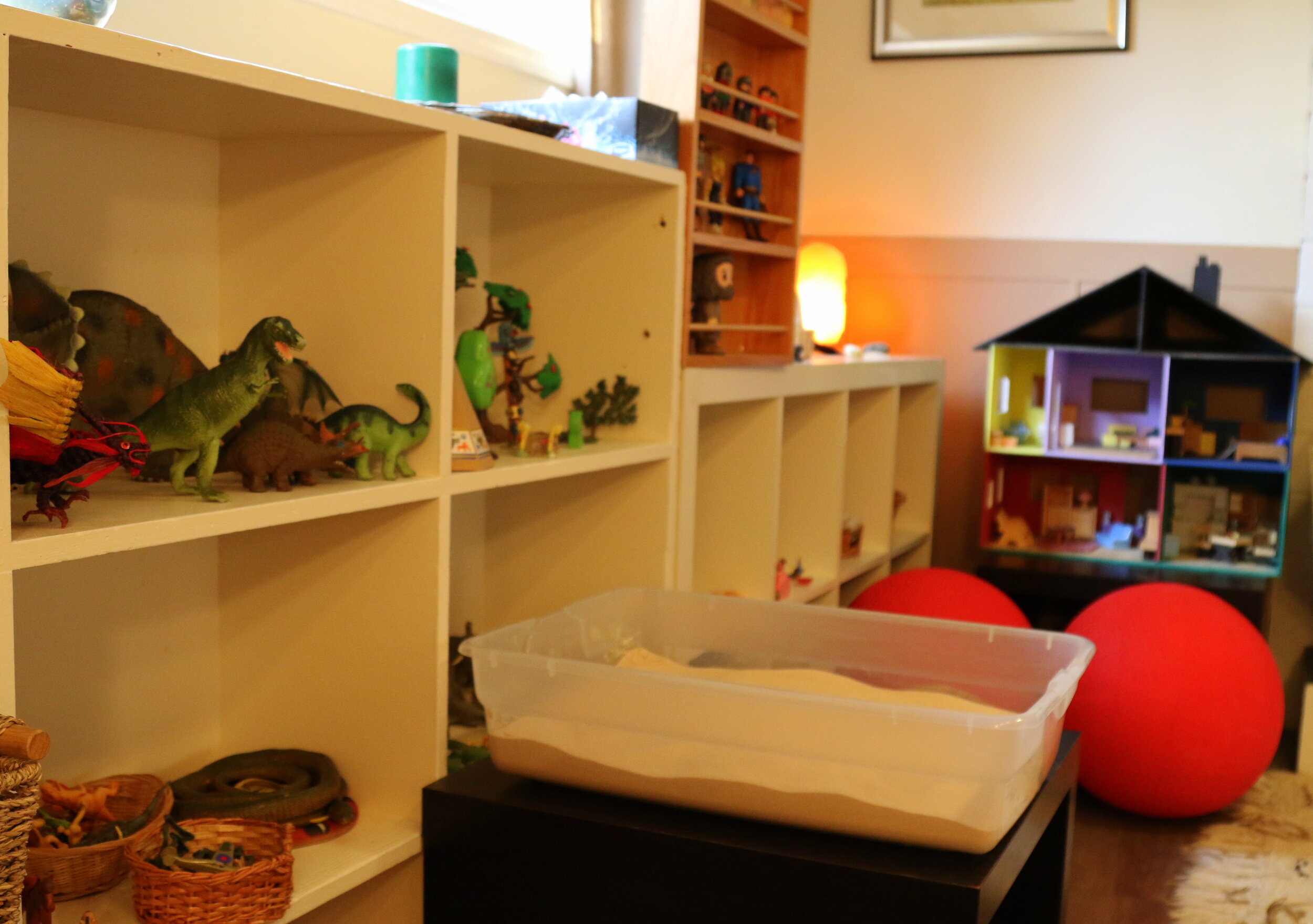Child CounselLing through play
I specialize in working with children of all ages using a child centered play-based approach. This includes playing using figurines, puppets, art, role play, sand tray, with some talking and inquiring, that invites a child to explore their internal world and to work through difficult issues in a safe and supportive environment. Through play the child will show how they make sense of the world, how they feel and think. Just as we often talk things out, children will play things out.
In other words, play uses their language, it’s how they communicate because their cognitive abilities and verbal skills are still developing. The Child centered play approach allows children to communicate symbolically or metaphorically through the use of toys (toys are their words) and uses the sand tray which offers the opportunity to express the unintegrated, unconscious and implicit memories of the child’s right brain. Play based therapy is an open, non-threatening way for them to express themselves and make sense of their emotions which is often hard for them to understand. This is particularly useful with children who have suffered trauma, abuse, losses, surgeries, lots of change and upheaval, shifts in family structure/divorce. This allows the child to make sense of their world, find ways to cope with situations and experiences which they may otherwise feel powerless to. It opens the door for them to convey desires, wishes, fears and needs.
Children like adults can be affected by anxiety, stress, social withdrawal, fear, depression, self-esteem issues, outside pressures and regulation issues. They are also very aware and sensitive to the stress in the family system. This can often show itself with a multitude of behaviours. The play-based approach uncovers the unmet needs underneath the behaviours and seeks to meet those needs.
I also work with you the parent or caregiver since children’s issues do not occur in isolation but within the context of their environments, mostly at home and at school. Generally, the most effective way for a child to work out challenges is within the parent/child relationship and leads to a faster resolution. I ask that the parents/caregivers be involved in the sessions if possible. My approach is centered around an attachment-based parenting model that puts connection before correction. It’s important for the parents/caregivers to see what the child is trying to express and be open to what might need to be repaired in the relationship as well as be supported on what you can do at home to support the child.
““Bonnie is a gifted healer, educator and passionate advocate for children who gives them a voice, and helps parents to meet their kids where they are, emotionally.”
”He really enjoys and looks forward to the sessions with you. When I say we’re going to see Bonnie he says YAY Bonnie! and I can tell he really just loves you, so that’s nice. :) “”







